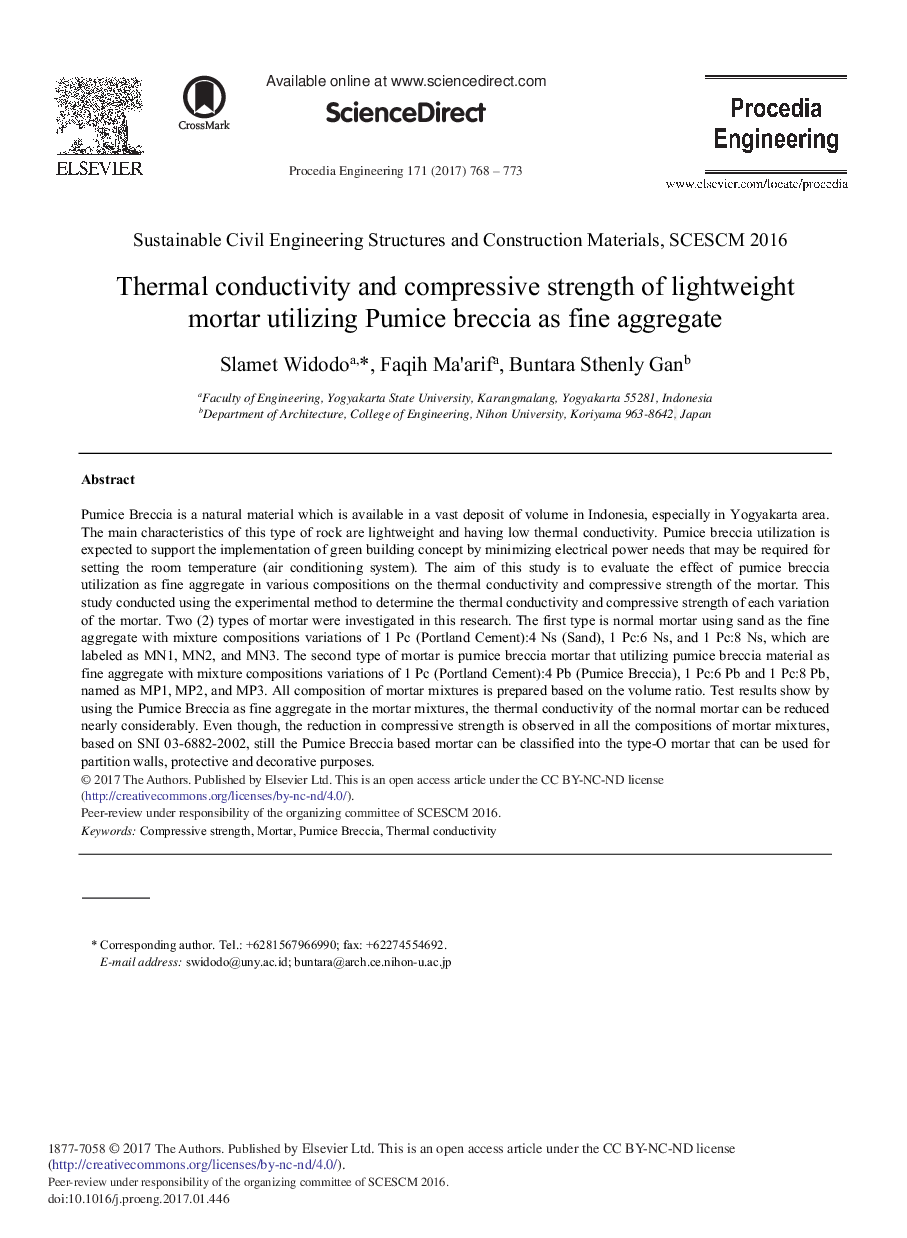| Article ID | Journal | Published Year | Pages | File Type |
|---|---|---|---|---|
| 5028619 | Procedia Engineering | 2017 | 6 Pages |
Abstract
Pumice Breccia is a natural material which is available in a vast deposit of volume in Indonesia, especially in Yogyakarta area. The main characteristics of this type of rock are lightweight and having low thermal conductivity. Pumice breccia utilization is expected to support the implementation of green building concept by minimizing electrical power needs that may be required for setting the room temperature (air conditioning system). The aim of this study is to evaluate the effect of pumice breccia utilization as fine aggregate in various compositions on the thermal conductivity and compressive strength of the mortar. This study conducted using the experimental method to determine the thermal conductivity and compressive strength of each variation of the mortar. Two (2) types of mortar were investigated in this research. The first type is normal mortar using sand as the fine aggregate with mixture compositions variations of 1 Pc (Portland Cement):4 Ns (Sand), 1 Pc:6 Ns, and 1 Pc:8 Ns, which are labeled as MN1, MN2, and MN3. The second type of mortar is pumice breccia mortar that utilizing pumice breccia material as fine aggregate with mixture compositions variations of 1 Pc (Portland Cement):4 Pb (Pumice Breccia), 1 Pc:6 Pb and 1 Pc:8 Pb, named as MP1, MP2, and MP3. All composition of mortar mixtures is prepared based on the volume ratio. Test results show by using the Pumice Breccia as fine aggregate in the mortar mixtures, the thermal conductivity of the normal mortar can be reduced nearly considerably. Even though, the reduction in compressive strength is observed in all the compositions of mortar mixtures, based on SNI 03-6882-2002, still the Pumice Breccia based mortar can be classified into the type-O mortar that can be used for partition walls, protective and decorative purposes.
Related Topics
Physical Sciences and Engineering
Engineering
Engineering (General)
Authors
Slamet Widodo, Faqih Ma'arif, Buntara Sthenly Gan,
